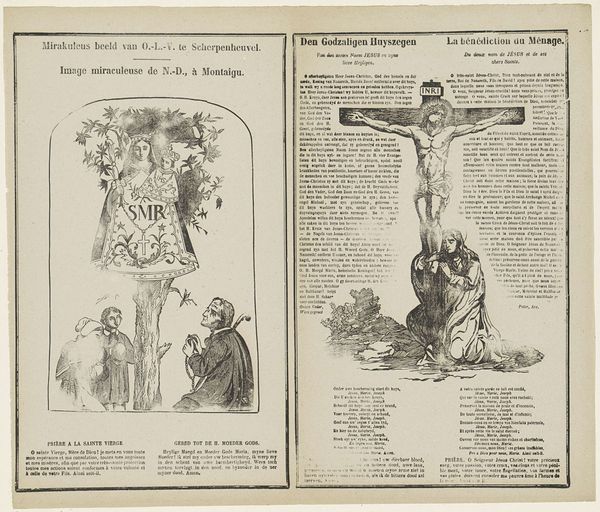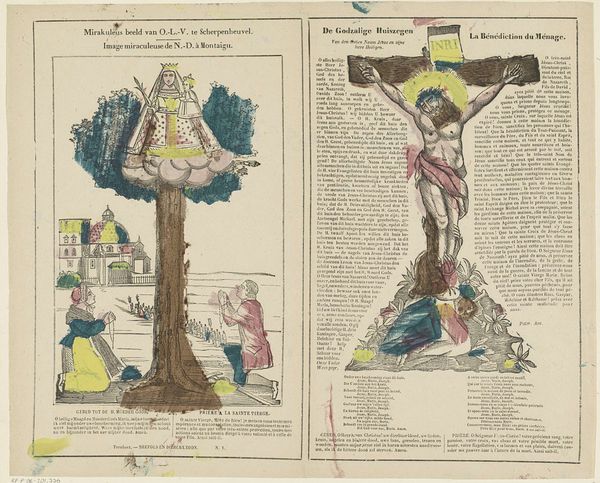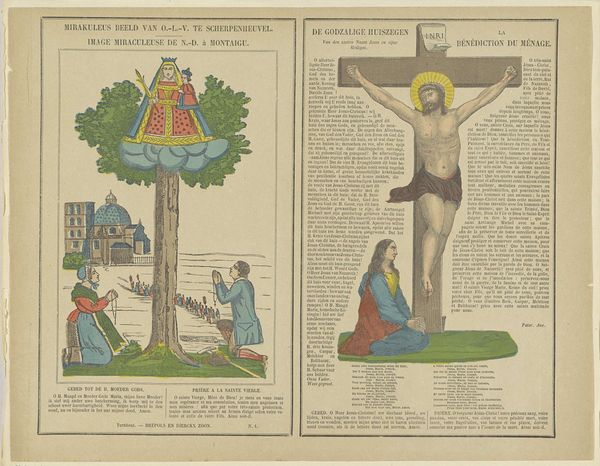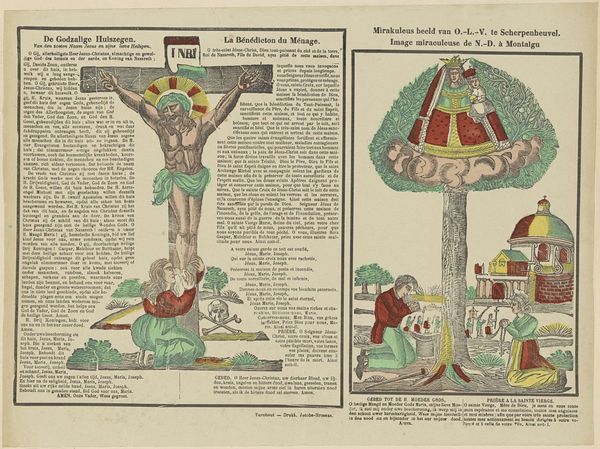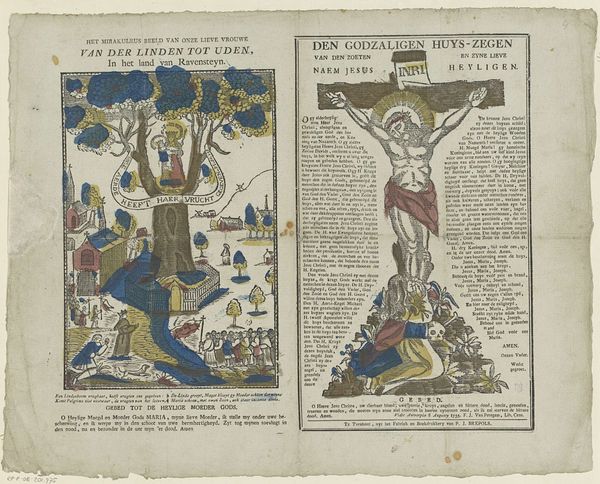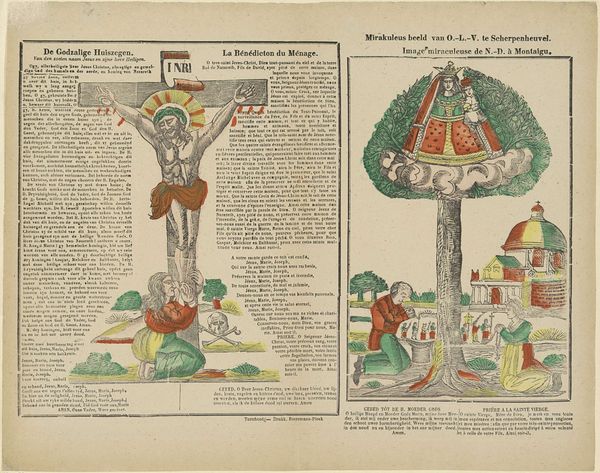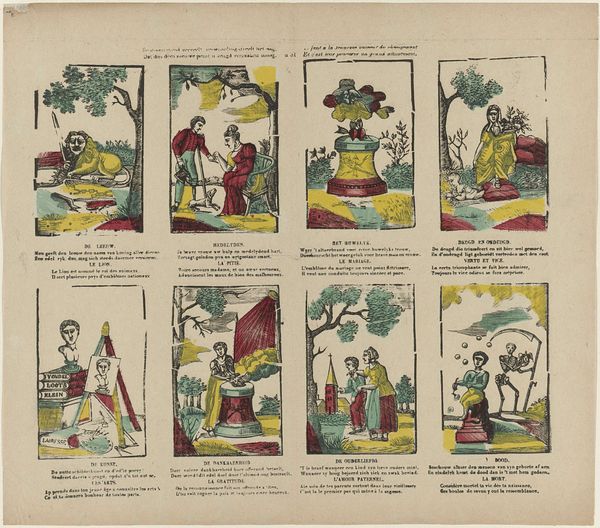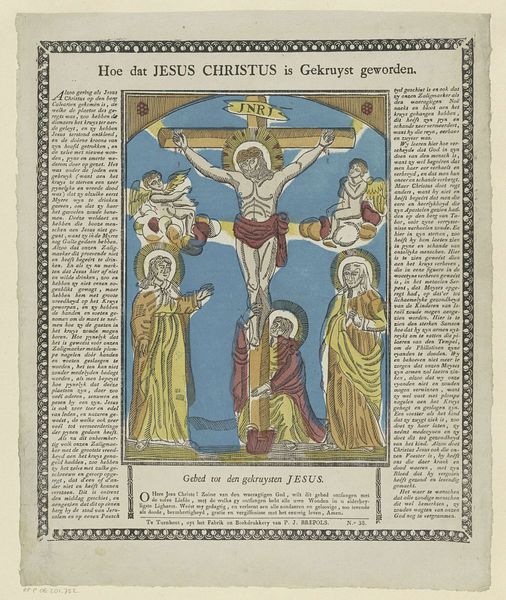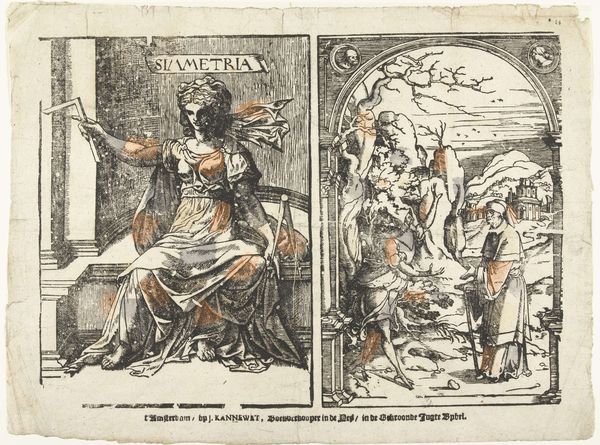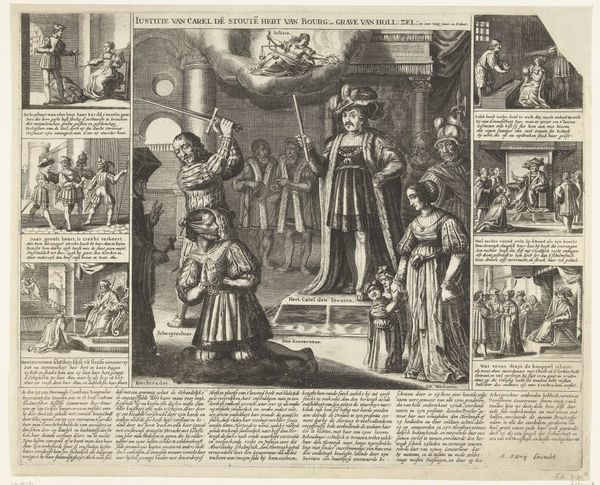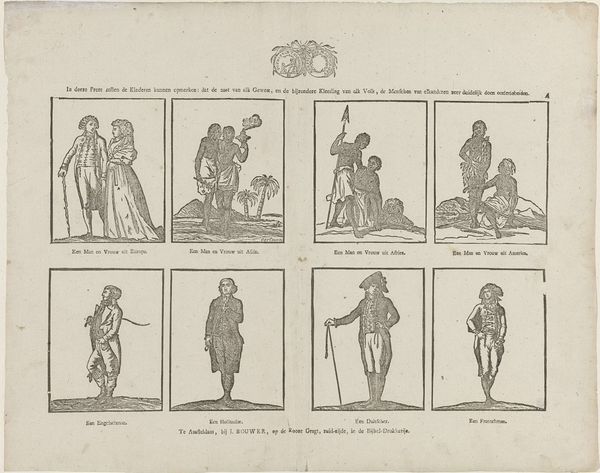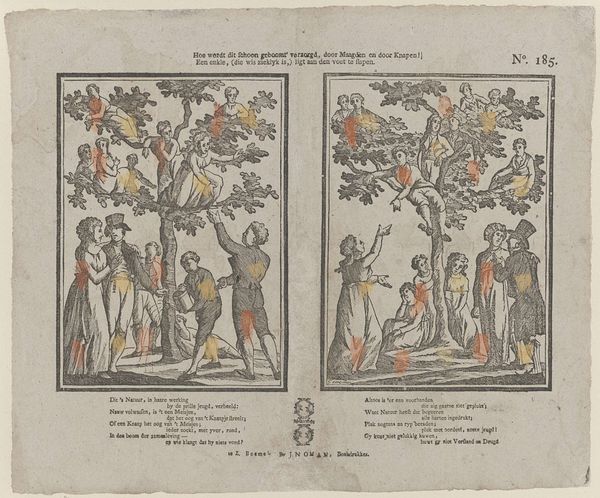
Mirakuleus beeld van O.-L.-V. te Scherpenheuvel / Image miraculeuse de N.-D., à Montaigu / Den Godzaligen Huyszegen / La bénédiction du Ménage 1827 - 1894
0:00
0:00
mhemeleersvanhouter
Rijksmuseum
#
narrative-art
# print
#
history-painting
Dimensions: height 311 mm, width 380 mm
Copyright: Rijks Museum: Open Domain
Curator: This striking print, created sometime between 1827 and 1894 by M. Hemeleers-van Houter, is called "Mirakuleus beeld van O.-L.-V. te Scherpenheuvel / Image miraculeuse de N.-D., à Montaigu / Den Godzaligen Huyszegen / La bénédiction du Ménage." It’s currently held here at the Rijksmuseum. Editor: My first impression is its division, the diptych format immediately contrasting the image of Mary with that of the crucifixion. The textual density and varying typefaces create an effect that feels less artistic and more… well, like a religious pamphlet. Curator: Precisely. It's a print intended for mass distribution, connecting faith to the domestic sphere. The image on the left, depicting the Virgin Mary in a tree, signifies the Marian apparition site of Scherpenheuvel. This ties the image into the specific cultural and devotional practices of the region. It's potent stuff. Editor: What I find compelling is how these visual and textual elements converge. The iconography serves as both a mnemonic device and a direct link to religious experience, right? The central “SMR” symbol on Mary's garment is visually anchoring—a constant reminder in a chaotic world. But beyond devotion, how did images like this operate politically, cementing social values? Curator: In that era, visual culture shaped communal identity, absolutely. Images reinforced established power dynamics—religious, social, political. They weren’t just about spiritual reflection; they shaped the social gaze and collective memory. Consider the parallel to contemporary imagery. Editor: So, whether distributed at a pilgrimage site or adorning a household wall, this print served as both a narrative of faith and a quiet instrument of social control, connecting public life with personal piety. Curator: Indeed. The print reminds us that images never operate in a vacuum. They exist within specific social contexts, actively shaping beliefs and behaviors. The juxtaposition between maternal comfort on the one hand and self-sacrifice on the other are the foundation of familial expectation. Editor: It has made me reflect upon how art, even with the most sincere intentions, always walks the line between inspiration and instruction. I wonder what viewers then would have felt? Curator: For me, its appeal rests in its quiet demonstration of image power and cultural endurance—visible proof how symbolic artifacts help mold worlds, both interior and collective.
Comments
No comments
Be the first to comment and join the conversation on the ultimate creative platform.

